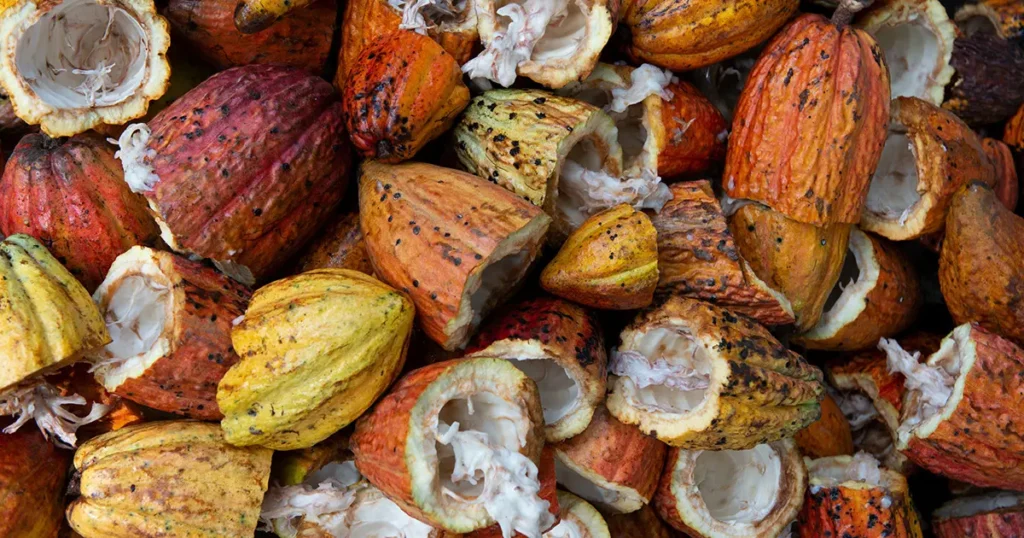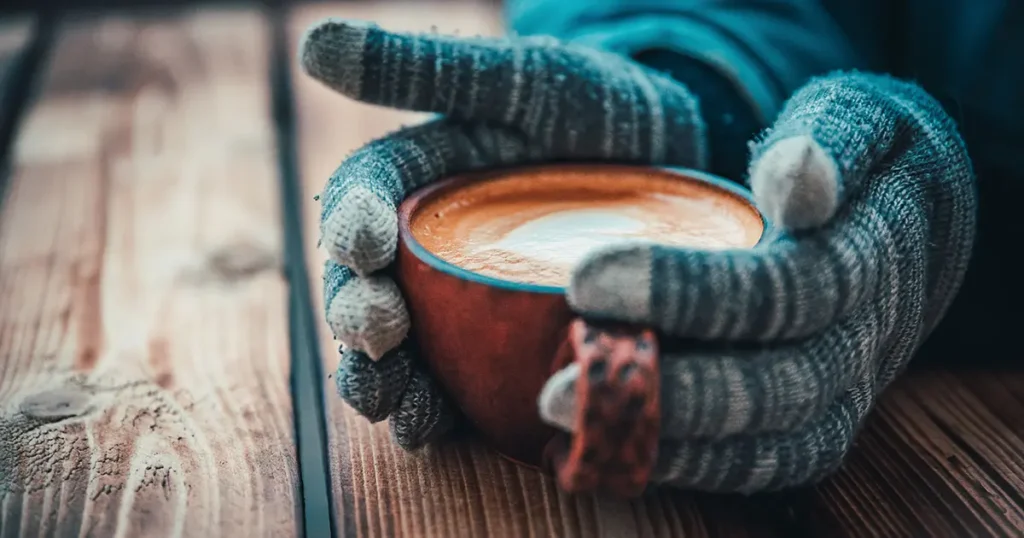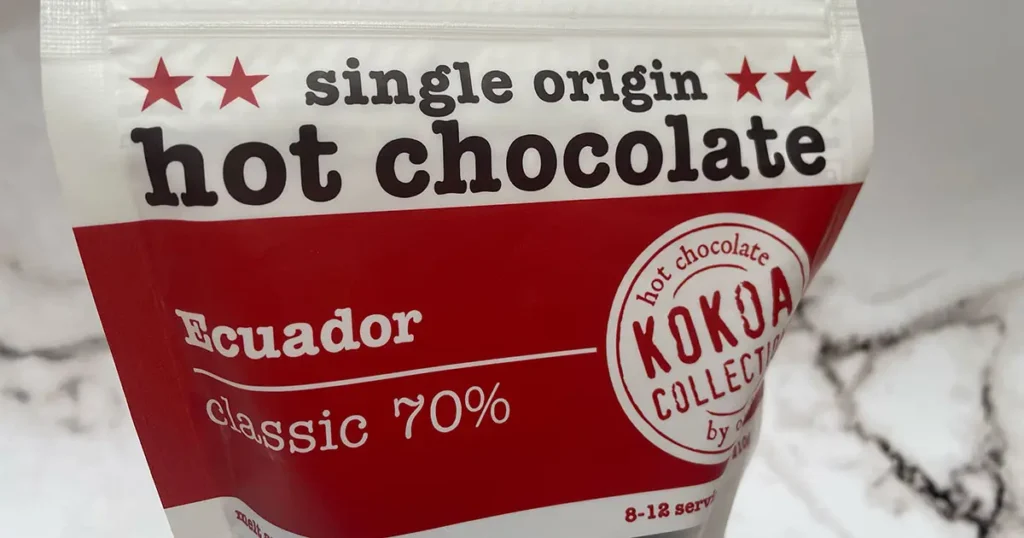Hot chocolate is a beloved beverage enjoyed by people all over the world. It is a comforting drink that warms the soul and satisfies the sweet tooth. But there is more to hot chocolate than just a simple mix of cocoa powder and milk. Behind the beans lies a fascinating world of art and science that goes into making the perfect cup of hot chocolate.
Table of Contents
The history of hot chocolate dates back to ancient civilizations, when it was consumed as a bitter drink.
Over time, it has evolved into the sweet and creamy beverage we know and love today.
But the art of hot chocolate goes beyond just adding sugar and milk.
It involves carefully selecting the right cocoa beans, roasting them to perfection, and blending them with other ingredients to create a unique flavour profile.
Key Takeaways
- Hot chocolate has a rich history that dates back to ancient civilizations.
- The art of hot chocolate involves carefully selecting and blending ingredients to create a unique flavour profile.
- The science behind hot chocolate includes understanding the chemical reactions that occur during the roasting and mixing process.
History of Hot Chocolate
Hot chocolate has been enjoyed for centuries, with its origins dating back to the ancient Mayan and Aztec civilizations.
The Mayans believed that chocolate was a gift from their gods and used cocoa beans as a form of currency.
They also made a bitter drink from the roasted cocoa beans, which they mixed with water and spices such as chilli peppers, vanilla, and cinnamon.
When the Spanish conquered the Aztecs in the 16th century, they brought cocoa back to Europe and sweetened the bitter drink with sugar.
Hot chocolate quickly became popular among the wealthy, and it was often served in special chocolate houses.
In the 18th century, chocolate production became more widespread, and hot chocolate became more accessible to the general public.
It also became a popular drink in America, where it was often served with marshmallows and whipped cream.
Today, hot chocolate is enjoyed all over the world and can be made in a variety of ways.
Some prefer a rich and creamy hot chocolate made with whole milk and chocolate chips, while others enjoy a spicier version made with chilli powder and cinnamon.
Regardless of the recipe, hot chocolate remains a beloved and comforting drink for people of all ages.
The Art of Hot Chocolate
Hot chocolate is a beloved drink that has been enjoyed for centuries.
It is a drink that is both simple and complex, with a rich history and a variety of techniques for making it.
In this section, we will explore the art of hot chocolate, including the ingredients, the process of making it, and presentation techniques.
Choosing the Right Ingredients
The quality of the ingredients used in hot chocolate can make all the difference.
The best hot chocolate is made with high-quality dark chocolate, milk (or a creamy dairy-free alternative) and, if you have a sweet tooth, sugar.
I prefer to use dark chocolate instead of cocoa powder for a richer flavour but there are also some excellent quality cocoa powders on the market as well, such as those by blendsmiths.
It is also important to choose the right type of milk.
Whilst whole milk is the most traditional choice and will give the drink a creamy texture, it might be a little too much for those of us who are now used to skimmed or semi-skimmed.
However, other types of milk, such as almond, oat or soy milk, can be used as a dairy-free option.
The Process of Making
The process of making hot chocolate is simple, but it requires attention to detail.
First, the chocolate or cocoa powder, sugar, and milk are combined in a saucepan and heated over medium heat until the mixture is heated through and the sugar has dissolved.
The mixture is then whisked until it becomes frothy and smooth.
The hot chocolate can be served immediately or kept warm over low heat until ready to serve.
If, like me, you have a Hotel Chocolat Velvetiser, then forget the mess and washing up involved with the saucepan method and revel in the velvety richness that your spinning dervish of chocolatey goodness brings you!
Presentation Techniques
Presentation is an important part of the art of hot chocolate.
There are a variety of techniques that can be used to make the drink look more appealing.
One technique is to top the hot chocolate with whipped cream and chocolate shavings.
Another technique is to add a sprinkle of cinnamon or a dash of vanilla extract to the mixture for added flavour.
The hot chocolate can also be served in a decorative mug or glass for an extra special touch.
In conclusion, the art of hot chocolate is a simple yet complex process that requires attention to detail and high-quality ingredients.
By choosing the right ingredients, following the proper process, and using presentation techniques, anyone can create a delicious and visually appealing hot chocolate.
The Science Behind Hot Chocolate
Hot chocolate is a delicious and comforting drink that can be enjoyed at any time of the day.
But what is the science behind this popular drink?
Understanding the Chemistry
The key ingredient in hot chocolate is cocoa powder, which is made from roasted cocoa beans.
Cocoa powder contains a number of compounds that contribute to its flavour, aroma, and nutritional value.
One of the most important compounds in cocoa powder is theobromine, which is a stimulant similar to caffeine.
Theobromine is responsible for the “feel-good” effects of chocolate, such as increased alertness and a sense of well-being.
Another important compound in cocoa powder is flavonoids, which are antioxidants that protect the body from damage caused by free radicals.
Flavonoids have been shown to have a number of health benefits, including reducing the risk of heart disease, improving cognitive function, and reducing inflammation.
Health Benefits and Nutritional Value
In addition to its delicious taste, hot chocolate also has a number of health benefits.
For example, the flavonoids in cocoa powder have been shown to reduce the risk of heart disease by improving blood flow and reducing inflammation.
Hot chocolate is also a good source of calcium, which is important for maintaining strong bones and teeth.
However, it’s important to note that not all hot chocolate is created equal.
Some hot chocolate mixes contain high amounts of sugar and artificial ingredients, which can negate the health benefits of cocoa powder.
To get the most health benefits from hot chocolate, it’s best to use high-quality cocoa powder and limit the amount of sugar and other additives.
In conclusion, hot chocolate is a delicious and comforting drink that also has a number of health benefits.
By understanding the science behind hot chocolate and choosing high-quality ingredients, you can enjoy this beverage while also supporting your health and well-being.
Hot Chocolate Varieties Around the World
While hot chocolate is typically made with cocoa powder, milk, and sugar, there are many variations of hot chocolate that incorporate different ingredients and flavours.
Here are some of the most popular hot chocolate varieties from around the world:
- Mexican Hot Chocolate: This hot chocolate is made with cinnamon and chili powder, giving it a spicy kick. It is often served with churros for dipping.
- Italian Hot Chocolate: This hot chocolate is thick and rich, almost like a pudding. It is made with dark chocolate and cornstarch, which gives it its unique texture.
- Spanish Hot Chocolate: This hot chocolate is similar to Italian hot chocolate, but it is often made with milk instead of water. It is also served with churros or other pastries.
- Swiss Hot Chocolate: This hot chocolate is made with dark chocolate and heavy cream, giving it a luxurious texture. It is often topped with whipped cream and chocolate shavings.
- French Hot Chocolate: This hot chocolate is made with dark chocolate and milk, and it is often served with a croissant or other pastry.
- Belgian Hot Chocolate: This hot chocolate is made with high-quality chocolate and milk, and it is often served with a dollop of whipped cream.
- African Hot Chocolate: This hot chocolate is made with cocoa powder and spices like cinnamon and nutmeg. It is often served with a slice of bread or a pastry.
No matter where you go in the world, you are sure to find a unique and delicious hot chocolate variety to try.
The Future of Hot Chocolate
Hot chocolate has been a beloved beverage for centuries, and it continues to evolve with the times.
As technology advances, so does the way we create and consume hot chocolate.
One exciting development in the world of hot chocolate is the use of innovative ingredients.
Many companies are experimenting with unique flavours and textures, such as adding spices like cinnamon or cayenne pepper, or using alternative milks like oat or almond.
This experimentation allows for a wider range of options, catering to different tastes and dietary needs.
Another trend in the future of hot chocolate is the focus on sustainability.
Consumers are becoming increasingly aware of the impact their choices have on the environment, and companies are responding by using ethically sourced cocoa beans and eco-friendly packaging.
This not only benefits the planet but also promotes transparency and accountability within the industry.
Technology is also playing a role in the future of hot chocolate.
With the rise of smart appliances, consumers can now make hot chocolate with the touch of a button.
Some machines even offer customisable settings, allowing for a personalised experience.
This convenience and ease of use are sure to appeal to busy consumers looking for a quick and delicious treat.
Overall, the future of hot chocolate is bright and exciting. With a focus on innovation, sustainability and technology, there are endless possibilities for this beloved beverage.






